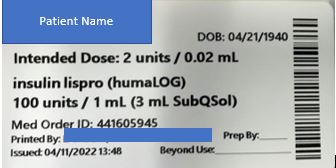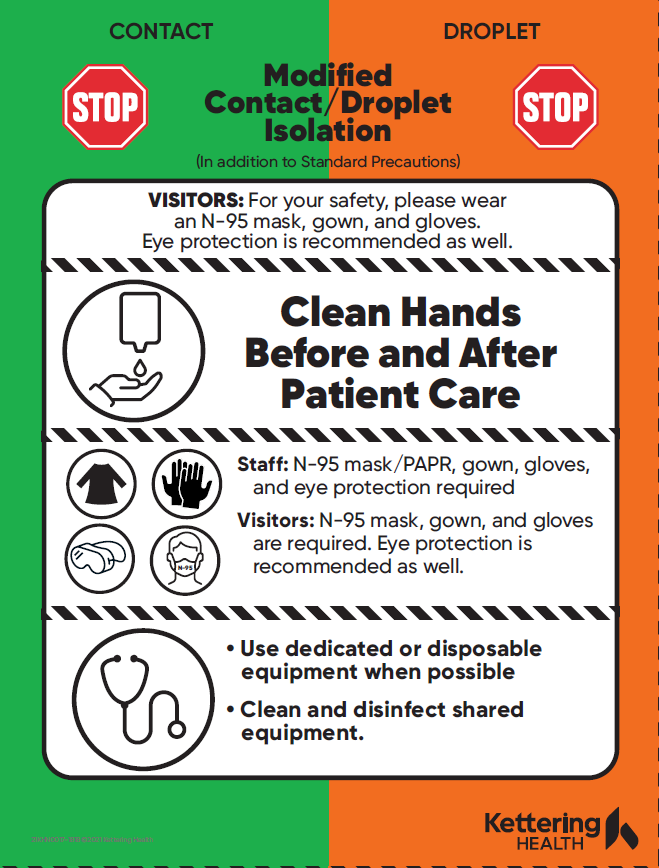Safety
Kettering Health has re-engaged our commitment to safety with the Safety First Program. Kettering Health is committed to zero harm for our patients and staff.
To achieve zero harm, it is imperative that we learn and improve after a safety event to prevent the event from reoccurring. Staff need to feel safe raising workplace safety concerns and feel they can report safety mistakes without fear of punishment.
Please consider sharing your opinions in the upcoming Culture of Safety Survey in June. We use the feedback to set safety strategies for improvement and are striving for max participation.
Great Catches
- Thank you, Johnny Chan, for your great catch. A physician at Main Campus approached Johnny with a medication question related to a 14-month-old baby that was seen at Kettering Health Springfield. Upon further review, Johnny realized the med orders should have been reviewed and verified by a pharmacist instead of auto-verified. Pratixa Patel was contacted and immediately had Epic check the build. It was found that the “peds rule” for having pharmacists review and verify was not set in Epic. The fix was applied.
- During the sign in time out Kelly Uzlik, Mike Shover, and Darcy Kesling caught a patient marked with incorrect laterality for a procedure. The physician was called to the OR to verify the site and remark the patient. No harm came to the patient. The correct site was operated upon. Great job OR team.
- Thank you Bentley Peed from Soin, for double checking the EMR during an insulin sign-off. Bentley noted that the glucose he was told was wrong. The dose of insulin was corrected, and harm was avoided.
- Thank you Emily Arnold from Soin. While assisting with a newborn bath, Emily discovered a congenital anomaly that had not been previously diagnosed. This was a critical finding that resulted in a transfer to higher level of care.
Medication Safety: Barcode Medication Administration for Insulin
Bar-code medication administration (BCMA) systems are associated with improved operational efficiencies, reduced preventable medication errors, and potential adverse events. BCMA systems can improve medication safety by verifying that the right drug and the right dose is being administered to the right patient.
Insulin is a high-risk medication that requires independent double-checks because inaccurate doses may lead to adverse patient outcomes. It is necessary for insulin to be scanned prior to administration. Below is a reminder of how insulin needs to be scanned to ensure patient and medication safety.
- Select patient and proper insulin for administration at Omnicell:
- Insulin glargine = Lantus®
- Insulin lispro = Humalog®
- Enter dose to be administered= “X” UNITS
- After pressing “Remove now” you will be prompted to “Scan Item Bar Code”
- Scan the insulin vial
- Insulin medication label will automatically print from Omnicell with the following information

3. Draw up the appropriate insulin dose while Omnicell bin remains open.
4. Return insulin to bin and immediately label the syringe with the printed label.
5. At bedside, prior to administration: Get 2nd nurse validation, scan patient and scan insulin medication label barcode, and validate dose amount in syringe matches does order in Epic for two RN verification and sign off in Epic.
Infection Prevention and Control
Ohio is currently in another COVID-19 surge. While community rates of infection are high, and the test-positivity-rate is also very high, the rates of admission have been relatively low. We no longer have dedicated COVID-19 inpatient units, and this has led to some confusion over recommended isolation and PPE required.
While most coronaviruses are transmitted by droplet, SARS-CoV-2 can also be spread by airborne transmission in some cases. For this reason, the CDC recommends healthcare workers in rooms with proven or suspected COVID-19 infection use modified droplet/contact isolation which includes:
- Gloves
- Gown
- N95 mask or PAPR
- Eye protection (goggles or face shield)

Thank you for keeping each other and our patients safe!
